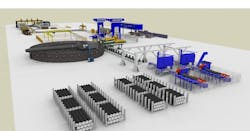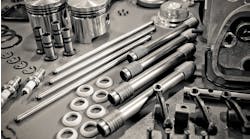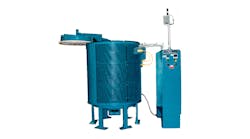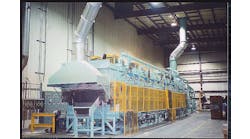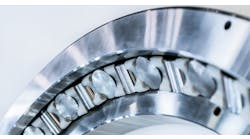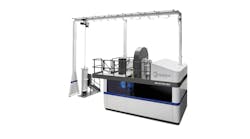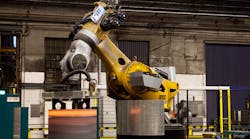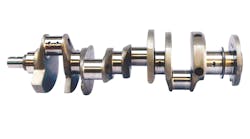Ohio Star Forge in Warren, OH, is the site of a new, roller-hearth continuous belt normalizing furnace that started up earlier this year, treating a range of steel forgings for the plant’s automotive and industrial product lines. These include hubs, fasteners, gear blanks, and balls.
Forging is a highly engineered operation, but heat-treating requires further expertise. Adding heat-treating capability lets forgers introduce another process option, and it helps them to match the product design standards of increasingly demanding markets.
OSF chose Can-Eng Furnaces International Limited to develop its new normalizing chamber. The Ontario company has long experience designing and integrating atmospheric heat-treating systems for high-volume operations, including automotive forging operations with high product standards for mechanical and metallurgical properties.
OSF’s new line is an automated system that will process up to 3,500 lb./hour. It includes a computerized loading system, mesh-belt normalizing furnace, a forced-air cooling system, and Level 2 automation.
The furnace chamber is heated indirectly, using radiant ‘U’ tubes, with recuperation to minimize product oxidation. By integrating Can-Eng’s level 2 automation system, the furnace tracks product status and collects process data with a degree of detail that supports continuous process improvement, equipment diagnostics, processing costs analysis, and inventory management.
For forgers, the challenge of effective heat-treating is not only to match the right heating and atmospheric conditions to specific products and applications: there is also the trick of integrating the right system to a particular forging shop.
In February, Seco/Warwick Europe S.A. commissioned a roller-hearth furnace line for heat-treating railway bearing rings (ARLHE-T-700) at Harkovskij Podshipnikovyj Zavod (HARP) in Ukraine. The HARP plant produces parts and mechanisms for automotive and agricultural machines, railways, and metallurgical machinery. This new line is the first of three on order from Seco/Warwick Europe; pre-acceptance tests for the second line are in progress now.
Seco said it conducted numerous tests as part of the acceptance program, meeting all the technological requirements of the supply contract, including high-level standards for deformation (ovalization, cone) and productivity.
HARP’s recent investment focused on hardening and tempering bearing rings, but it follows installation of three roller-hearth furnace lines for spheroidizing annealing bearing steel forgings, from 2006 to 2010.
Activities like this suggest that heat treating is gaining traction as an extension of forgers’ more standard capabilities: Strong Forge & Fabrication in Batavia, NY, for example, has added a large, batch heat-treating furnace to neutral-harden and carburize steel forgings for its line of pedals and levers for gearshifts, clutches, and brakes; wheel and steering components for ATVs; and chain anchors for forklifts, stackers, side loaders, order pickers, and reach trucks.
Adding heat-treating helped Stainless Steel Fasteners Ltd. in Chesterfield, England, earn Norsok M-650 accreditation from Statoil ASA, the Norwegian oil company. Now, SSF is qualified to hot-forge super-duplex stainless steel fasteners, and credits that accomplishment for a 30% increase in revenues over the past six months as oil-and-gas companies recognize that hot forgings enhance the integrity and value of tools and assemblies.
Problems with heat-treating duplex and super-duplex materials (commonly used in process and seawater piping applications) have been rising as those materials have been adopted for use in offshore drilling operations. SSF developed specific procedures for hot forging, loading, heat treating, and testing that ensure product consistency and uniformity, and Norsok M-650 qualifies those processes to ensure that all SSF die-forged fasteners perform to specification in offshore environments.


